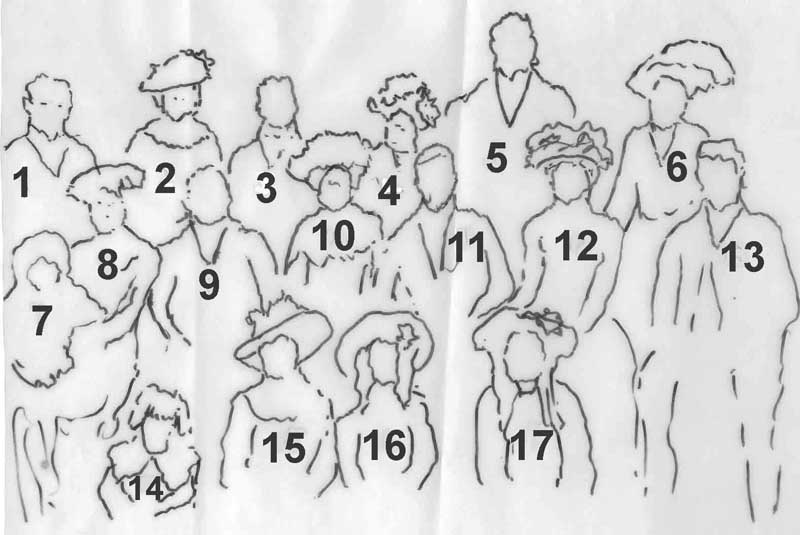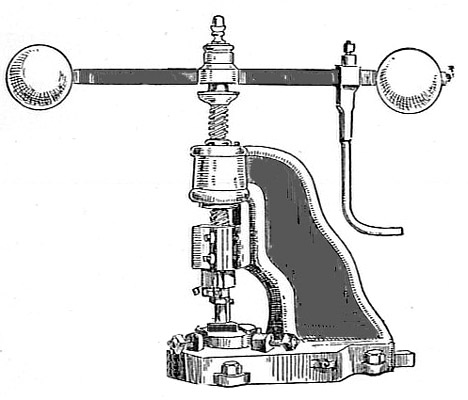A Nose for Sawdust
Sydney Reuben Tyzack was a puckish fellow, always ready for a prank. Life was for fun when he was a young man and that was the way he ran his business.
The shop he inherited, on the busy Ball's Pond Road, was at No. 10, Kingsland Green, near Dalston.
Once having started to think about strategy it was not long before expansion was in mind. By 1913 the trade directory showed that Sidney had plucked up his courage and was using the next door premises. He added number nine to his number ten.
The bequest caused a fair amount of family resentment. Sidney took sometime to treat the business seriously when he first took over. When he began to trade he had nowhere to live so he stayed with his sister Adelaide, known as Joe. He says he had a place in front of the fire where he slept on the rug. Joe charged him five shillings per week, a princely sum in those days. He used the carpet in front of the fire, until he married, shown here. Sidney married Lillian Dimmer in 1902 but few of his family came to the wedding.

1902 Wedding
| Wedding Group | ||
| 10 &11 | Lilian & Sydney |  |
| 9 | Alf Dimmer Great Grandfather | |
| 1 | Lilian's Father Alf Dimmer | |
| 2 | Not Sure | |
| 3 | Lilian's Brother Will Dimmer | |
| 4 | Sydney's Sister Minnie Tyzack | |
| 5 | Husband Lilian's Sister Kate Alf Hendy | |
| 6 | Lilian's Sister Kate | |
| 7 | Edie, Alf Dimmer's 1st Daughter | |
| 8 | Lilian's Sister-in-Law | |
| 12 | Ade Sydney's Sister | |
| 13 | Husband of Ade, Thomas | |
| 14 | Harold a bit touched | |
| 15 | Katie, daughter of Kate | |
| 16 | Babs, daughter of Kate | |
| 17 | Not sure | |
Probably the bequest still rankled. They had three children, Sydney John, and Leslie Ernest, who were born at Woodside Gardens, Tottenham and Doris Irene who was born in Yarmouth, by the seaside. By this time smaller families were becoming more normal.
Inside the shop, on a small raised platform near the counter was a fairly tame baboon. At this date it was common for ordinary people to keep exotic pets for their own amusement. Sailors coming home would bring in such animals to the docks and make a little money by selling them as they returned from their trips abroad. Sidney owned the baboon for some time but it caused a rumpus when it spied some wax fruit on a lady customer's hat. The ape snatched off the fruit it couldn't resist, complete with the bonnet. Exit one screaming lady to return shortly with the local constable! The law did not lock him up. It didn't even lock up the baboon. "You'll 'ave to do something with that damned animal Sid" was fortunately the way the law exercised its power in those days.
In the years immediately before 1913, the business began to lose its customers. Nobody was buying saws, at least not from Sidney Tyzack. Sidney suspected his brothers. He had caught one of them once reading his order books and forever after that he thought they tried to steal away his customers. Who knows whether it was true?
So in 1913, just as markets to this day have their periods of ups and downs so a mini depression in the business climate hit the saw making business. Soon after the local trade directory showed the additional shop next door the financial position became serious. The day came when the business at No. 10 Kingsland Green, was insolvent and it had to be let go to discharge the liabilities. Even after selling all the assets there was still money owed.
It all adds up to a disappearing act. At the time of course the war had been declared and able bodied men were expected to join the army and die for their country. This is what happened to my maternal grandmother’s brothers, surnamed Moore, and to the fiancée of my subsequently maiden aunt Florie. Unlike my mother’s family there was no history of Army service in this part of the Tyzack family. So could it be that Sidney was keeping his head down for army service or was is just debt? He returned occasionally to London while in Yarmouth. Perhaps he went to sell some saws and make some money. Certainly the family was very hard up during the period there. It is not apparent how they made a living in Yarmouth.


